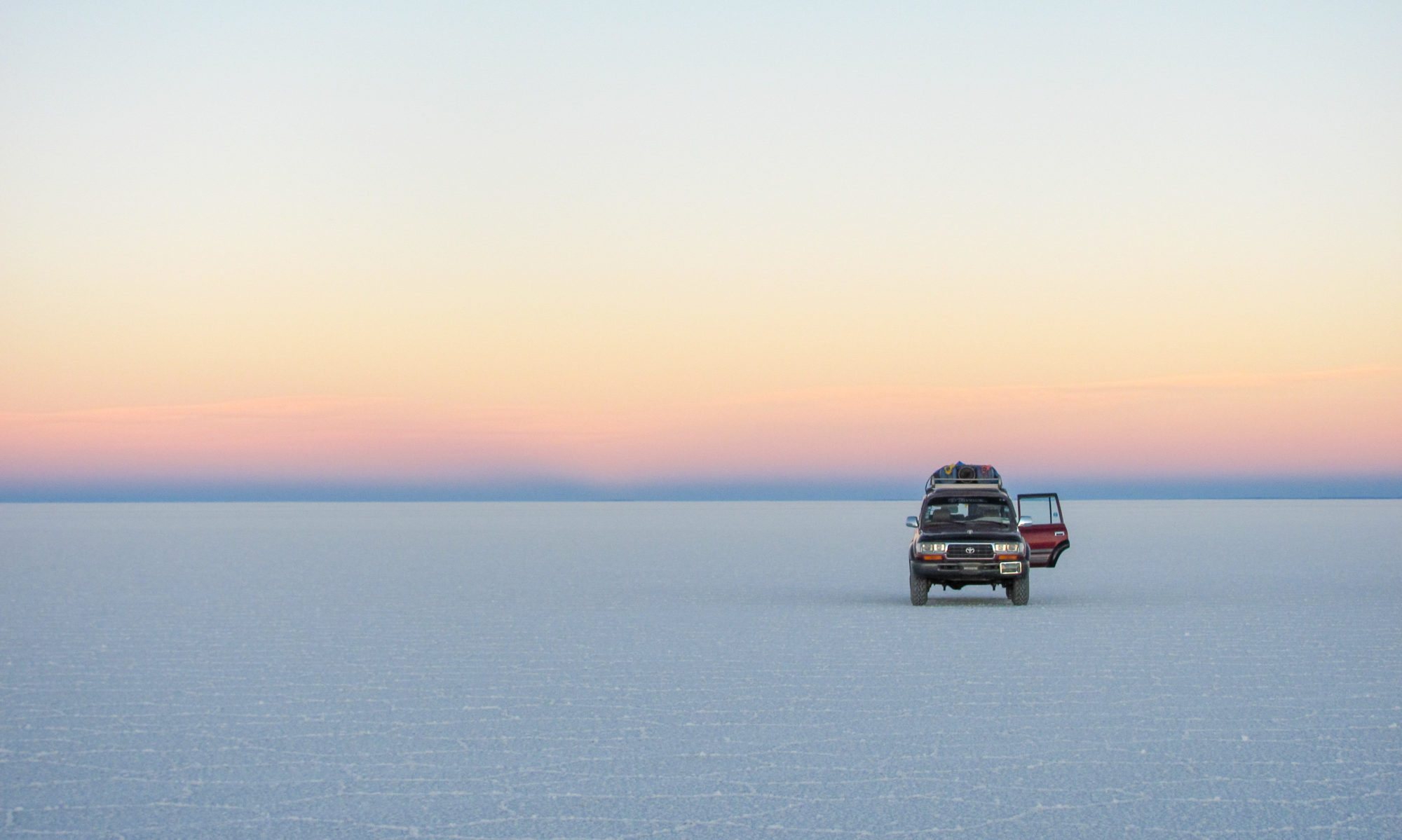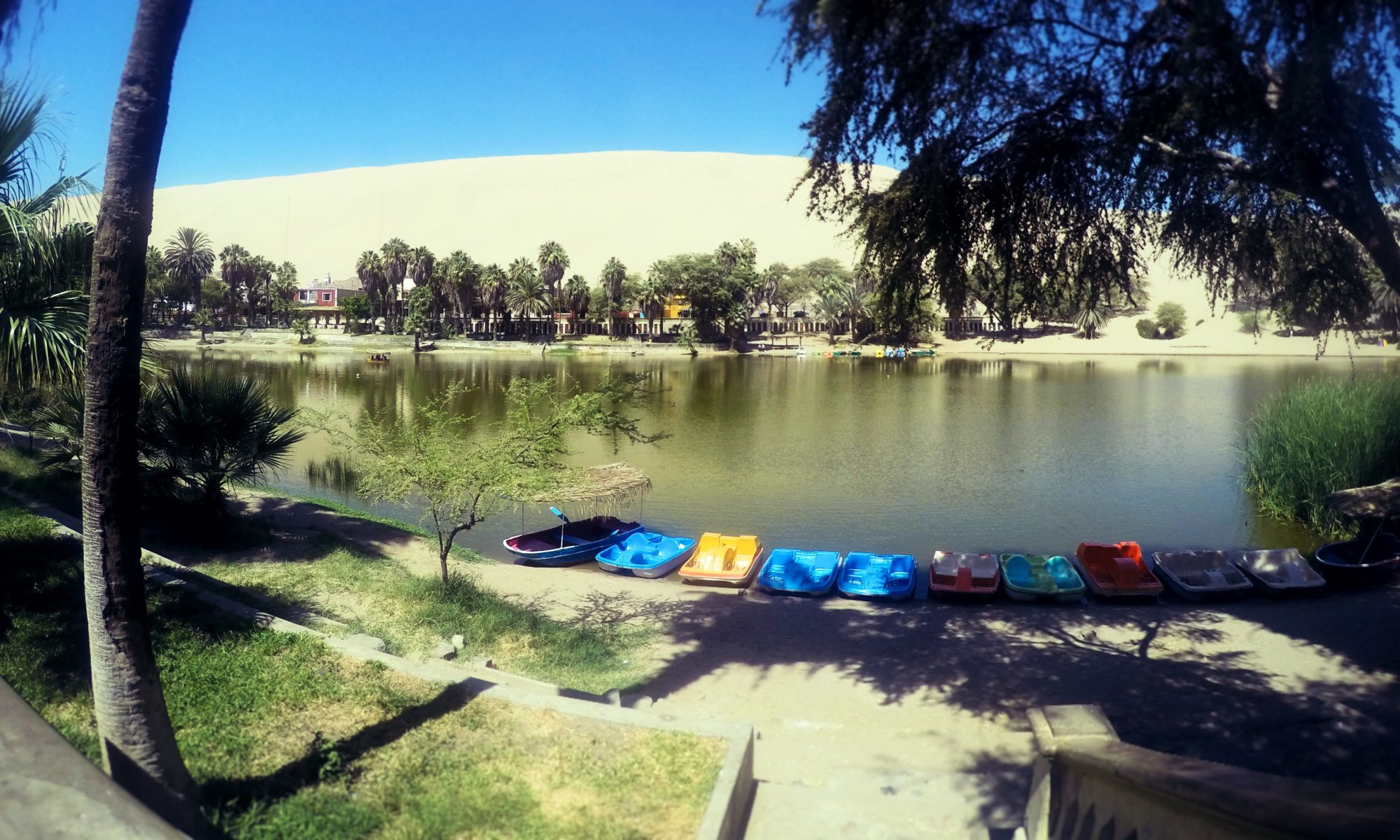One of the most surreal places I have ever spend the night is Huacachina, a small oasis in the middle of the desert. A blue greenish lagoon lined with palm-trees is surrounded by a few dozen structures. Rising above their roofs are the most massive sand-dunes you have ever seen. It gets even better: you can actually surf down these dunes on an old snowboard! Immensely beautiful, utterly bizarre and only a few hours drive from Peru’s capital Lima: welcome to Huacachina.
– What to do in Huacachina –
Why visit?
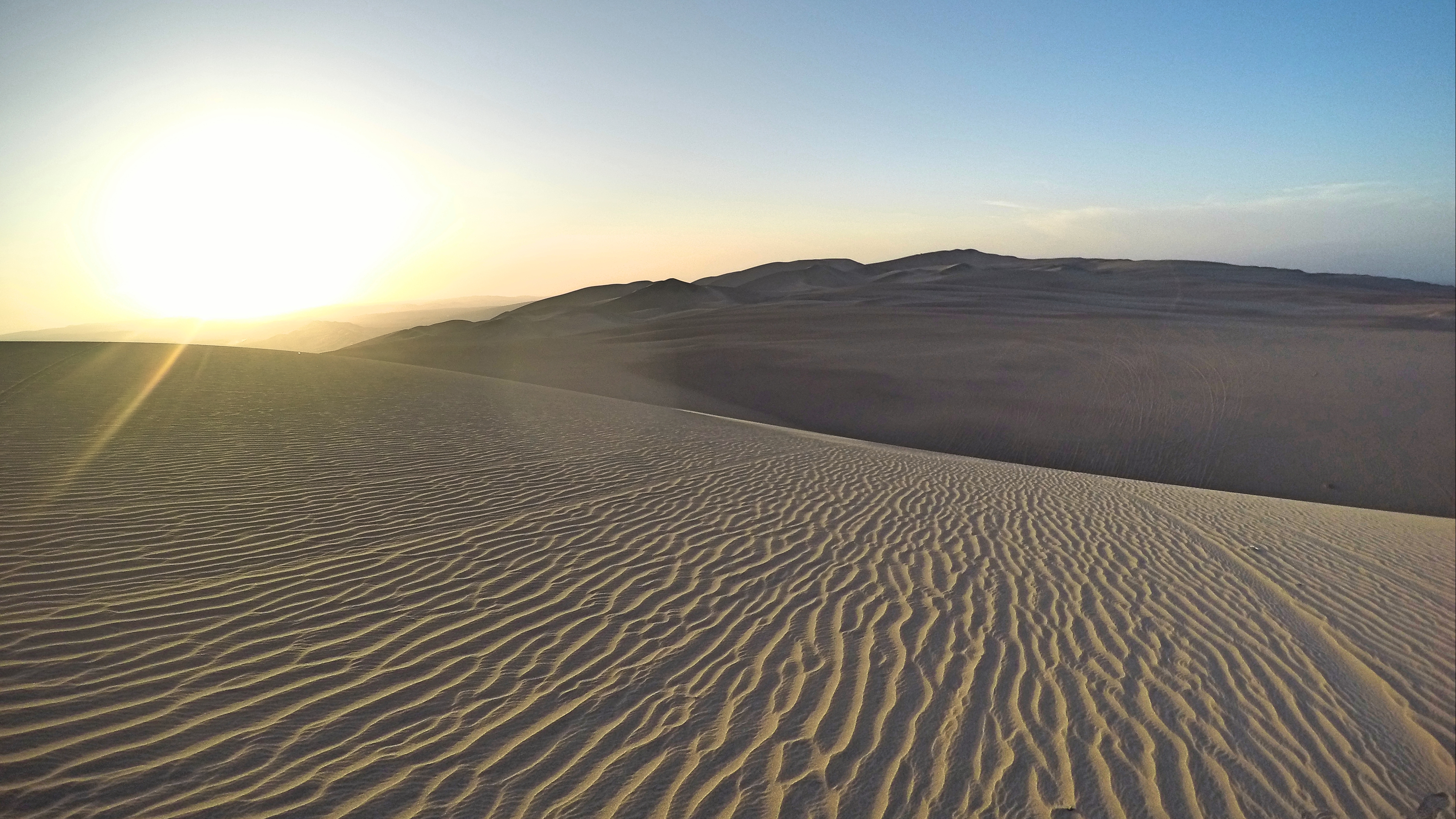
When traveling South-America you expect to come across some arid-lands, but for me it was a surprise to find an actual sand-desert in the southern regions of Peru. Huacachina is a popular spot on the ‘gringo-trail’, but the increase in visitors did not spoil the charm of the place. While some opt for a night in the bigger and more developed Ica, which neighbors Huacachina, you should really just stay in the town itself.
It is the perfect outpost to explore the area and the sleepiness of this town combined with the imminent presence of the huge sand dunes lulls you into a wondrous day-dream state that allows you to relax and forget about everything else from the first second you naked feet touch the hot sands.
Sandboarding
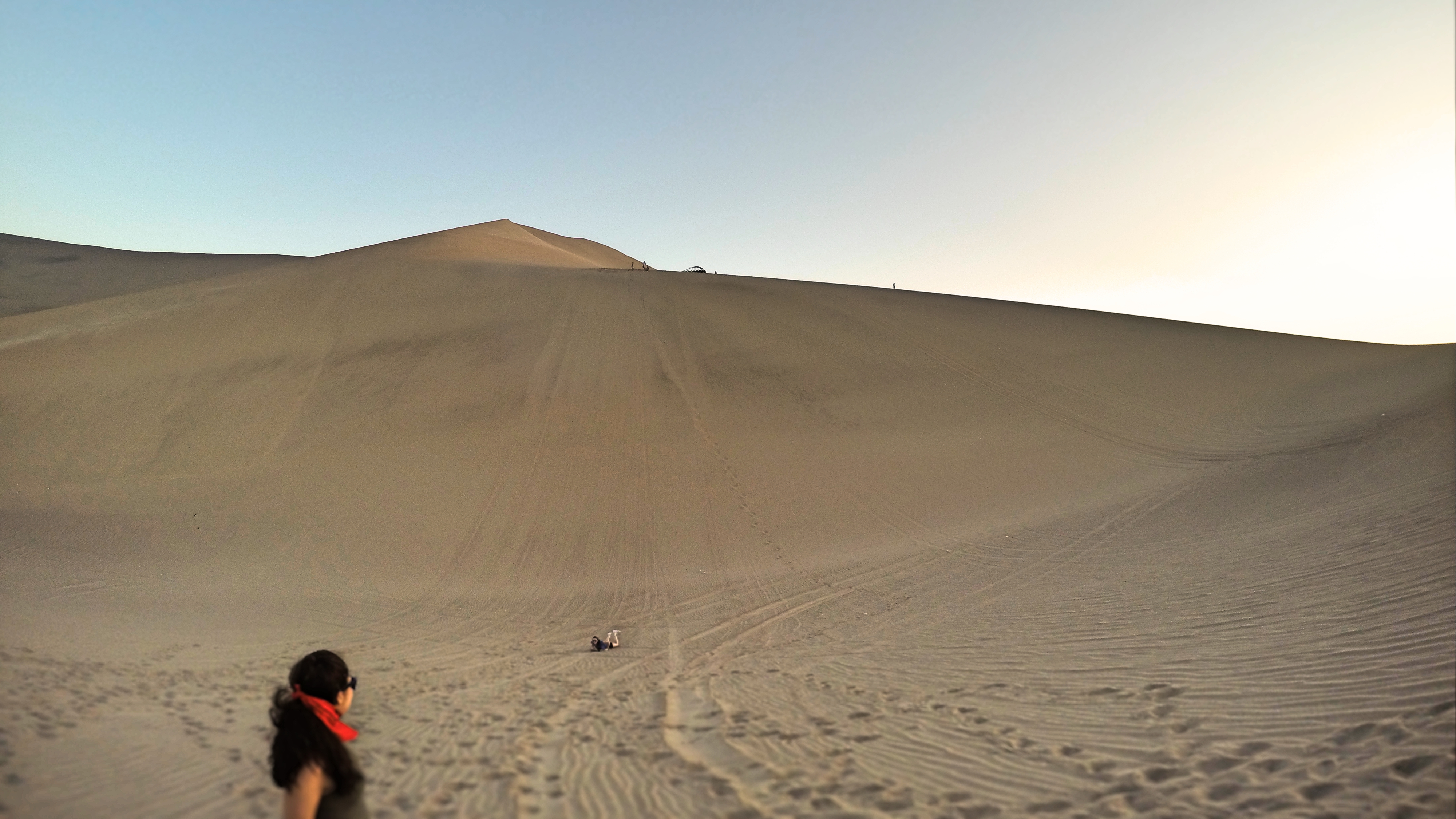
Huacachina’s big draw? The sand-boarding. Imagine venturing out into the desert in a small sand-buggy which races up and down the slopes with immense speed closely resembling a roller-coaster ride except for the fact that there are no tracks.. Then you suddenly stop and when the motor dies down the absolute quietness of the desert overcomes you. The sun slowly descends and spreads a vast array of colors over the sands. Bright white turns to golden-brown to a reddish amber before it dips below the dunes.
The tranquility is not long lived as you grab an old snowboard from the buggy to race down the slope that is right in front of you. You pick up speed, your adrenaline rushes and then.. you most probably crash and get every bodily orifice you possess filled with heaps and heaps of fine sand and dust. After a little practice you find your balance and then its just fun and adrenaline from there. Watch this video to get an impression and I am sure you’ll be convinced. Also watch it to laugh when I crash down into the sand on my first attempt of standing up on the board.
Taking a sandboarding tour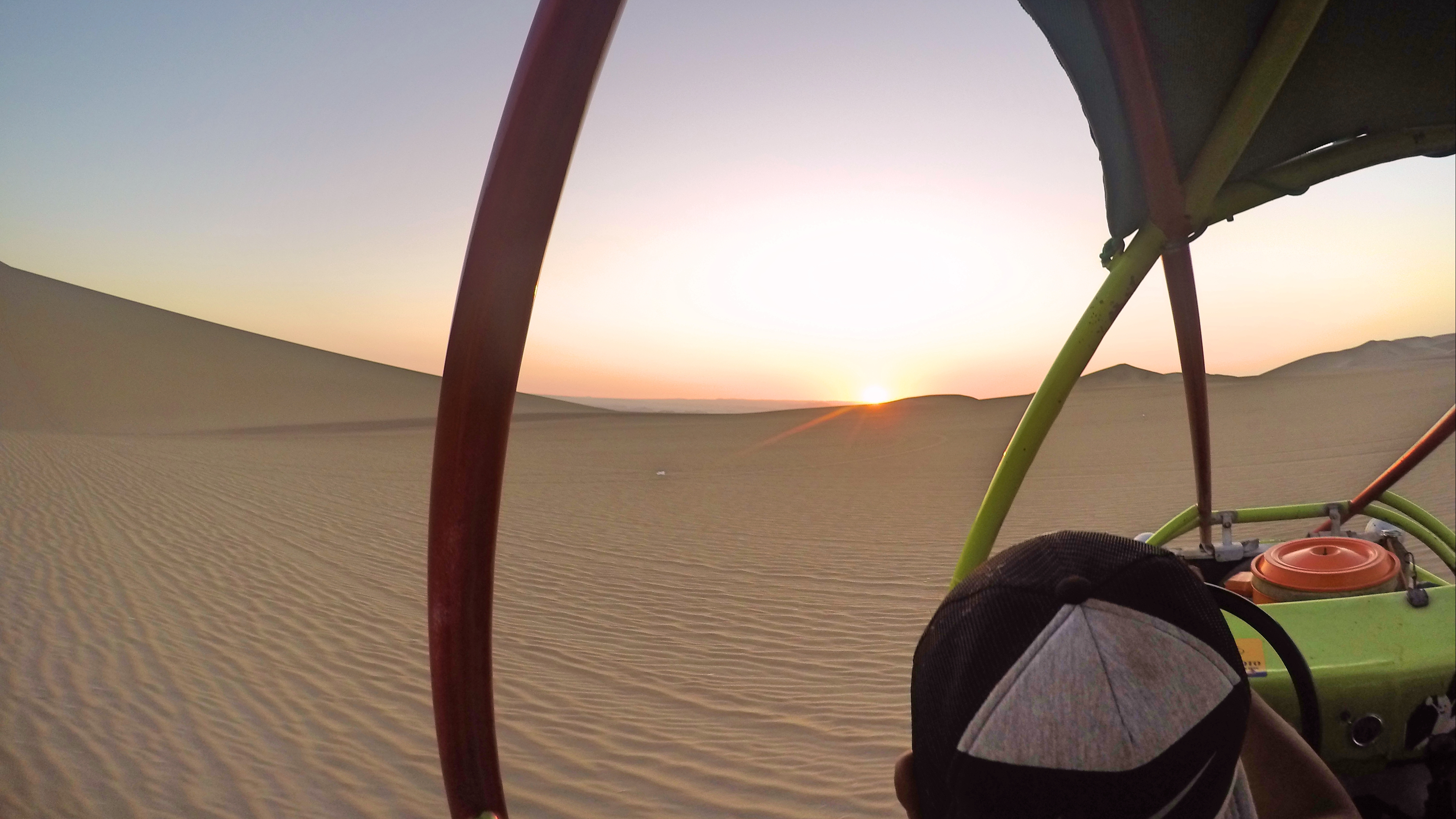
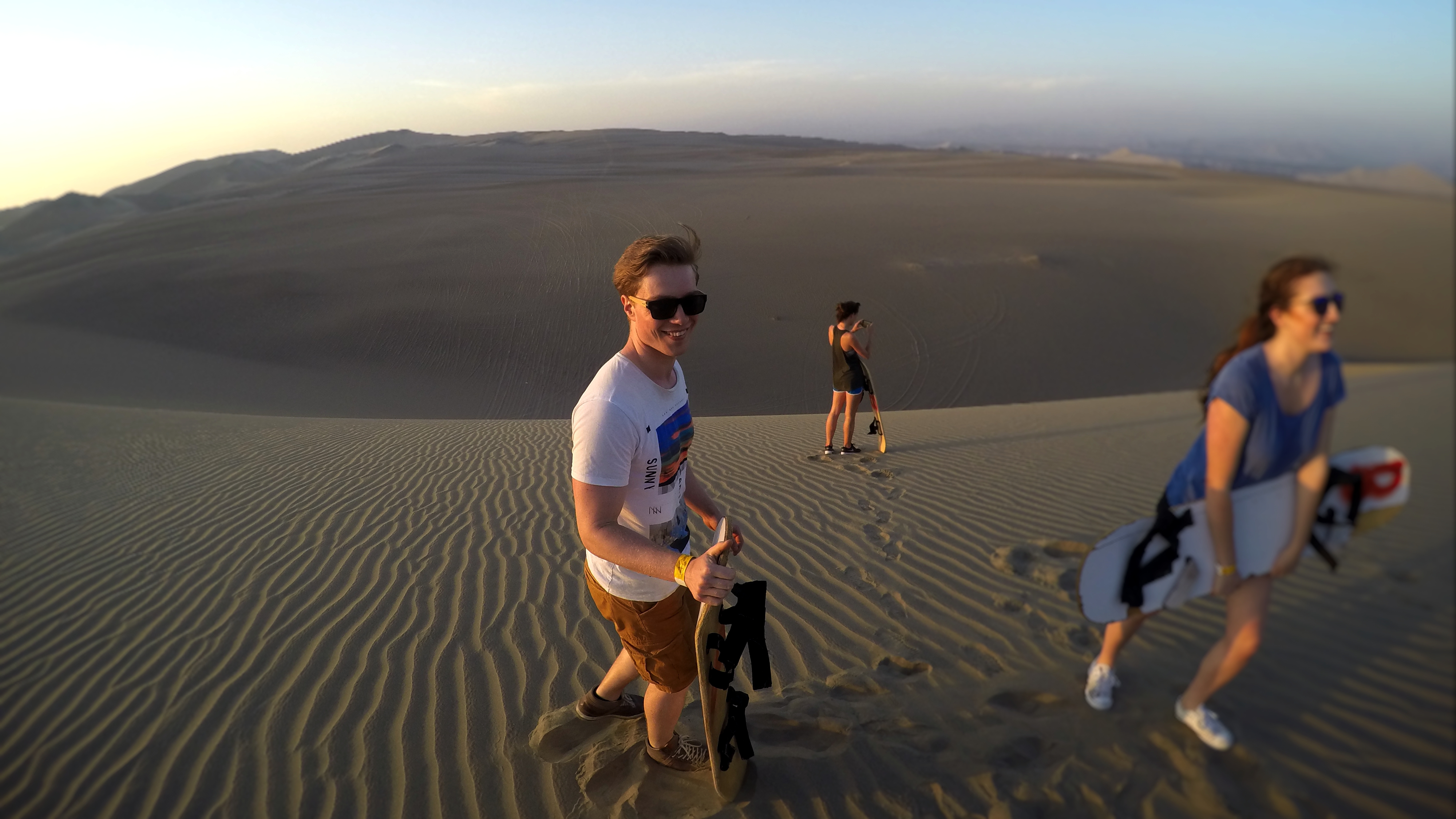
When you decided you are going sand boarding you can either hire a board for about 10 soles, make sure they provide you with some wax, or book a buggy-tour. Going out here by yourself is not the right call as climbing a single dune can take you up to half an hour. And only a few seconds to get back down. A buggy tour will take you up many dunes by sand buggy and picks you up at the bottom. Plus, the ride itself is golden. No worries, it has a roll-over cage.
The tours take place in the early morning or late afternoon to avoid the midday heat. During the hottest hours of the day most people gather around the swimming-pool to relax, read and generally to socialize. I would opt for an afternoon-tour to catch the sunset. There are several companies that all offer similar services, so I would just go with the cheapest one you can find after a quick walk around town. Its tiny anyways so this will not take you longer than 30 minutes.
Star gazing and partying
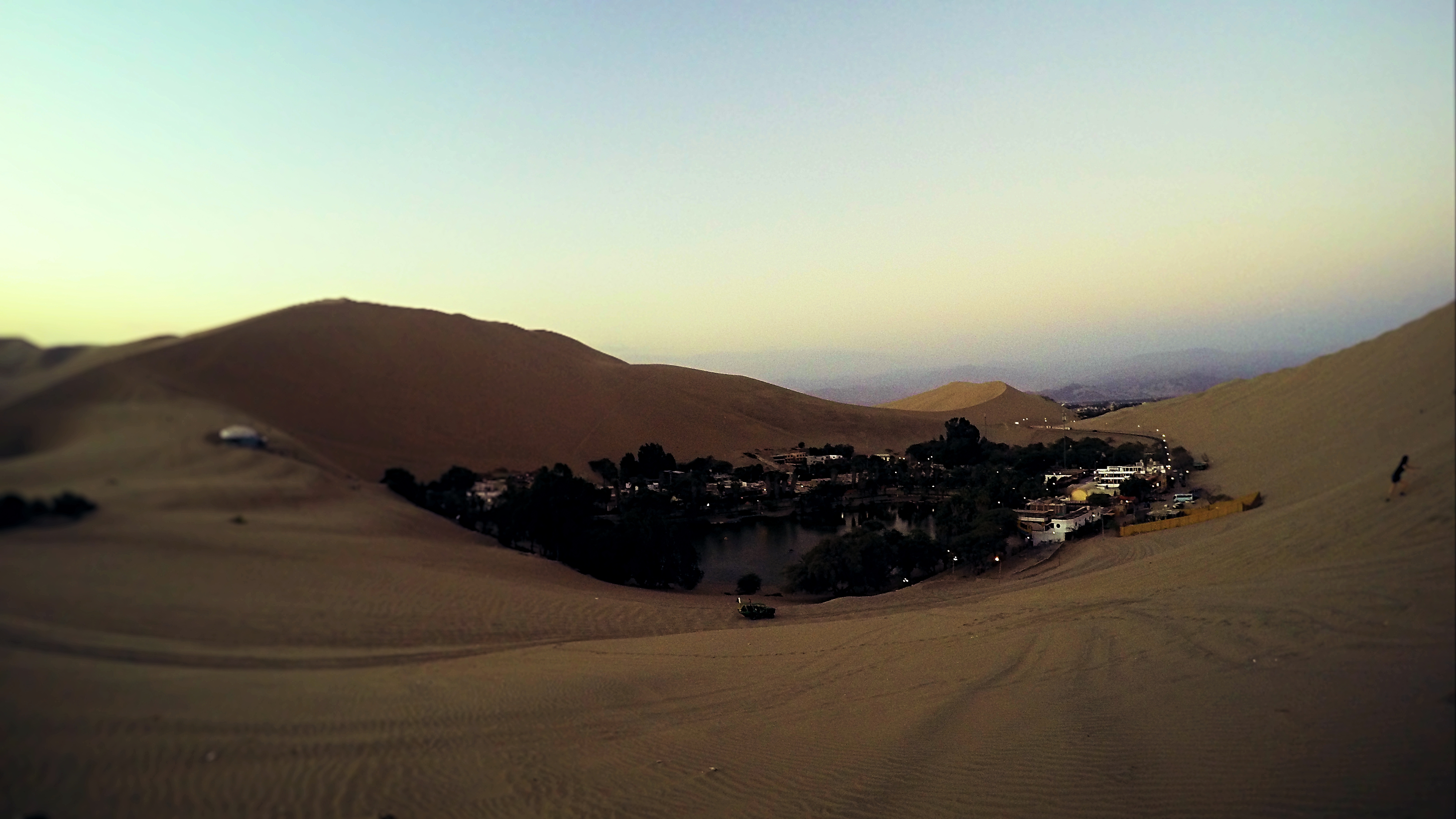
After the sun goes down some sneak out into the desert to climb one of the mighty dunes and view the dimly lit oasis from the top, or to stare at the stars above contemplating life while sitting in the still warm sands. Later at night people drop back down into one of the few bars in town that organize parties that last until the early hours of the morning.
Wine & Pisco tasting
In the close vicinity are some of Peru’s premium wineries (Bodega’s), which make for an interesting visit. Do not expect to taste any quality wines. Visiting the wineries can be combined with Pisco-tastings, the famous Peruvian liquor, which are also not known for their refined tastings. Prepare to get pretty drunk while you learn about the way the locals actually brew the stuff.
Paracas, Islas ballestas and the Nazca lines
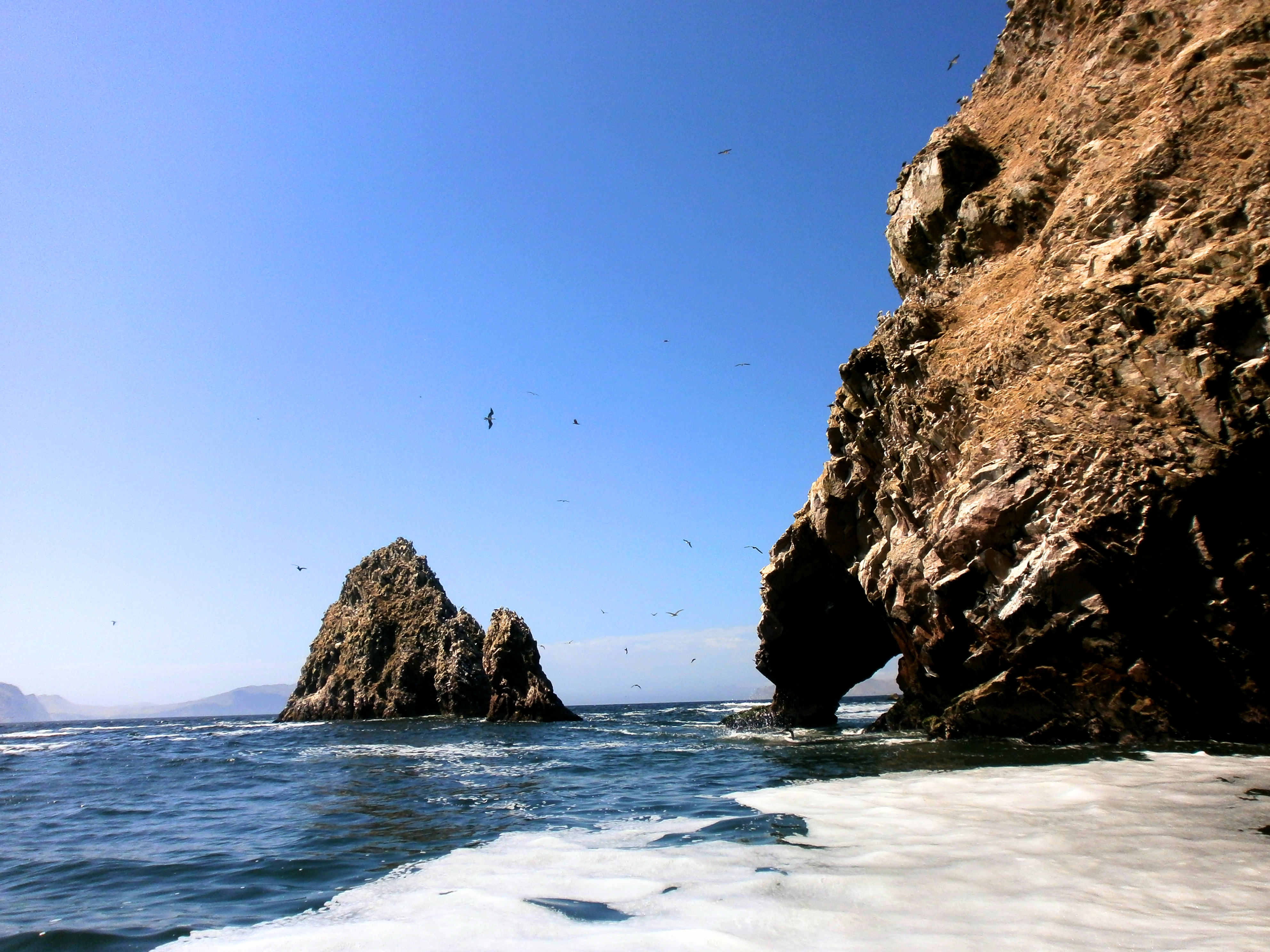
As an outpost Huacachina is perfect for visiting Paracas, its national reserve and the Islas Ballestas. As they are only about an hour’s drive from Huacachina. A little over 2 hours to the south is Nazca which hosts the famous Nazca lines. Unless you are willing to spend about a 100 euro/dollar on a 15 minute micro-plane tour, this is not worth the visits at all. If you are going for the micro-plane anyways, please take into account that the really shabby plane will bob up and down vigorously. If you are prone to get motion-sickness you will experience some projectile vomiting for sure.
What not to do
Lastly you can hire a boat to go out onto the lagoon but it is a mystery to me why anyone would ever do that as the lagoon is very small and it will not offer you anything more than a second-degree sunburn caused by the burning sun combined with the reflective water of the pond.
– Where to eat & sleep –
We found out that Booking.com will consistently give you the best rates on hotels. To make finding the perfect spot a little easier we made a selection for Huacachina. Click the link below to find the best places to stay in Huacachina.
Banana’s Adventure Hostel

I stayed at Banana’s Adventure Hostel, which has clean rooms, good beds, an amazing bar, poolside area and the price of the sand-boarding tour is included in the rate (but even taking this into account it is pricier than other hostels in town). A tour should cost around 15 soles.
They also serve pretty good meals and have a well equipped bar. It is not the cheapest (45 soles a night) but during the hottest hours of the day you’ll be glad you paid a little extra to have access to the best outdoor hangout in Huacachina.
– Practical information –
When
Really any time is fine. Huacachina is always sunny and always either comfortable or hot. December – April are the hotter months and June – September the colder ones. But even in July it can be pretty hot in the afternoon heat.
Budget
| Daily Budget | 40 EUR ( 45 USD) |
| Street food | 5 EUR – ( 6 USD) |
| Meal in a restaurant | 10 EUR (12 USD) |
| Dorm | 8 EUR – (9 USD) |
| Double in a 3-star hotel | 25 EUR – (30 USD) |
In & Out
Huacachina can only be reached by taxi from Ica for about 3-7 soles. 3 if you speak Spanish and do not care about a taxi being official or not. A little more if you do not speak Spanish. Taking unofficial taxi’s in Peru is fine and generally not dangerous UNLESS you do it after nightfall.
Buses from Lima (from the North) will cost anywhere between 15 – 50 soles, take about 4 hours and multiple buses drive by Ica on a daily basis. Services to Arequipa (South), Ayacucho (East) or closer by to Paracas, Nazca or Pisco can also be found. Just go to the bus terminal and buy your ticket there. Check out this article to find out which bus companies are trustworthy.
– Things to take when traveling to Peru –
There are a few items that I would pop into my bag for a trip to Peru. Firstly, always take many layers of clothing with you. Being in the Andres means that the weather switches rapidly. Be prepared for both sunshine and rain. But more importantly, be prepared for rapid switches in temperature. Thermals and swimming shorts in the same daypack? In Peru its not as weird as it sounds.
Fjallraven trapper hat
Even in the coldest nights on the altiplano you won’t get cold ears while wearing this trapper hat. It’s simply not possible. The big advantage of trapper hats compared to beanies is that they warm up your whole head instead of just the top and they fit tightly around your head, meaning you wont lose it while mountaineering in the Andes. Fjallraven Kanken is a Swedish premium brand that uses sustainable materials. Also their products just look damn good. It’s a little investment, but one that’s worth it.
Thermals
Besides wearing a warm hat or beanie, the best addition to your travel wardrobe is skintight thermal underwear. Super comfy, light, small to pack and it transforms any normal pants into super warm isolated pants. I value thermal underwear over a thermal shirt because to warm up your upper body you can simply stack all the shirts you are carrying on top of each other while stacking multiple pants is harder. Also your legs are not used to this added layer so wearing thermals will work wonders on the ‘feel temperature’. LAPASA thermals are designed for travel and come in at a very good price.
Power bank
The usefulness of a power bank is self-explanatory. Being able to charge your phone, tablet, camera, GoPro or e-reader on the go has made traveling so much easier. I use this particular power bank over a year now and its just perfect. The 20,000mAh provides my IPhone with about 5 charges, the double port means I can charge my camera and phone at the same time (or be a life saver for the person sitting next to me) and the LED torch in the middle is super useful when you try to find something in your bag on the bus in the middle of the night. The display is useful as well and tells you a whole lot more about the current charge compared to ‘3 out of 5 lights left’. Oh and it comes in at HALF THE PRICE of a Anker power bank. I have yet to find its flaws.
Lonely Planet
Because its just the best compact travel guide out there. I always take a lonely planet with me for its practical information, background on certain sights and for when I find myself unexpectedly off the beaten path in search of accommodation for the night. For me this is still the best way to read up on a destinations in long haul bus rides. You don’t need internet or battery-life which even on a luxurious bus in Peru can really come in handy sometimes;)
